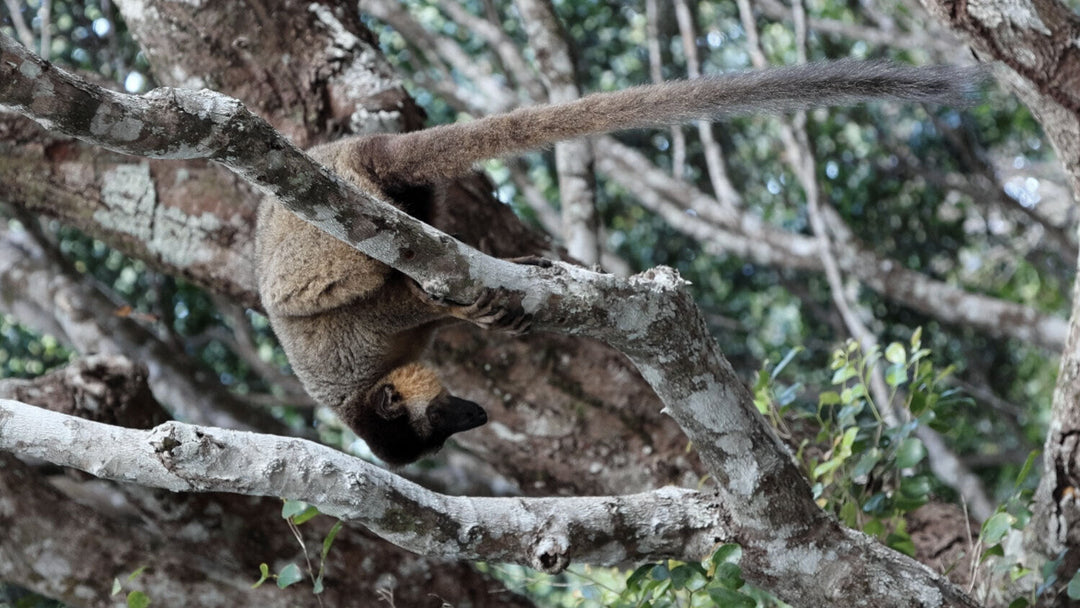Estimating wolf pack and population sizes with trail cameras
Having a good handle on population size is vital for the conservation of any species, yet this can be challenging when the species you're studying is elusive, wary of people and covers vast territories.
In this guest blog post, Thomas Gable, Project Lead for the Voyageurs Wolf Project, shares insights and experiences of monitoring wolf population and pack sizes with trail cameras in the Greater Voyageurs Ecosystem in Minnesota.
Winter in the Northwoods of Minnesota is in full swing and that means our work to estimate wolf pack and population size is as well. Estimating the size of any wildlife population comes with its own idiosyncratic challenges unique to that species. One of the biggest challenges for estimating the size of wolf populations is that wolves are elusive, very wary of people, and they have huge territories (in our area they are >125-150 km2).
Traditionally, biologists estimated wolf populations in forested environments (like the Greater Voyageurs Ecosystem, MN where we do our work) by getting up in an airplane and counting the number of wolves in each pack in their study area, or by searching for fresh wolf tracks on the ground and trying to determine how many wolves were traveling together in each pack. Both of these methods provide an estimate of the number of wolves in a pack. Biologists would then add up all of the wolves in each pack to yield a population estimate. Admittedly, this is an oversimplification of the process but captures the general premise of how this was (and still is) done.
However, both of these methods can be problematic. Interpreting wolf tracks in the snow requires good tracking condition, knowledgeable trackers, and an understanding of pack territory boundaries to know which pack the tracks belong to. On the other hand, flying in an airplane looking for wolves requires good flying conditions, that the wolves are visible and not hidden in the forest, and is quite expensive ($250-350/hour) relative to other methods.
In the early days of our project, we used a combination of flying, track counts, and trail cameras to estimate pack sizes. However, through time, we realized that trail cameras are by far the most efficient and cost-effective tool for the job. Because of this, trail cameras are the only tool we use to estimate wolf pack and population size.
Our general approach when using cameras is to set multiple cameras on various travel corridors throughout wolf pack territories that wolf packs like to use for travel (e.g., snowmobile trails, lakeshores, logging roads, beaver dams). The goal is to capture video footage of the entire pack traveling around together. However, one video observation of the pack isn’t enough—we need multiple throughout the winter. We would not have any confidence in our pack size estimate if we only had one observation of the pack because we would not know whether that single observation was of all the wolves in the pack. Perhaps 1 or 2 wolves weren’t traveling with the pack on that day or a wolf traveling with the pack never walked in front of the camera. There are many reasons why wolves that are part of a pack might not be captured on camera! Thus, we need to get repeated observations of the pack to feel confident that we know the number of wolves in it.
We started deploying cameras in early January when temperatures were routinely plunging below -20 to -30 F. Using your fingers to set up trail cameras in the field is rough when it is that cold and most cameras barely function in those temperatures! However, the wolves were not fazed by the cold and their tracks indicated they had been out and about. Due to weather and other unexpected happenings, we are almost finished deploying our cameras. Typically, we would have all our cameras deployed by late January at the latest! Once we finish deploying cameras, we will soon start going back to all the cameras we recently deployed to ensure they are functioning well. Camera issues are never far away when bitter winter temperatures are frequent.
In total, our goal this winter is to estimate the number of wolves in 15 packs across a ~2,000 km2 area (what we call the “Greater Voyageurs Ecosystem”). By estimating pack size, we can then determine the population size, which is valuable data for a range of research, management, and conservation objectives.
Voyageurs Wolf Project favour the Browning Spec Ops Advantage for monitoring wolves, as this model of trail camera produces great quality videos, lasts a long time on a set of batteries and the no-glow infrared flash keeps the camera well hidden.
Learn more about the Voyageurs Wolf Project over on our project pages and make sure you follow the project on Instagram and YouTube for lots of stunning wolf videos!


